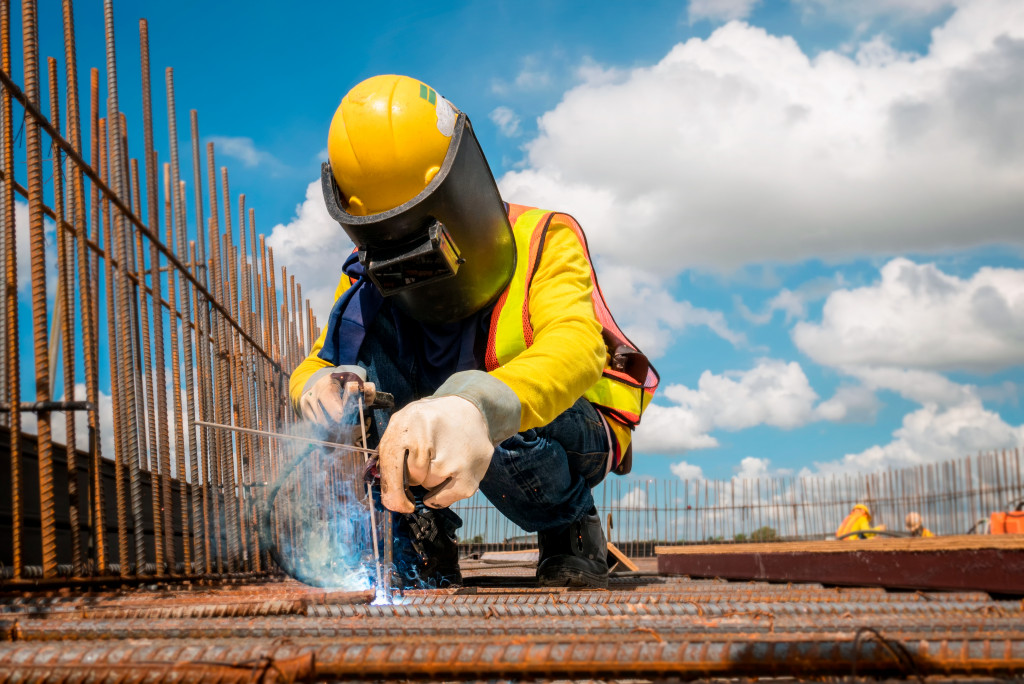Safety is probably one of your top priorities if you are a business owner in the residential construction industry. After all, construction sites can be dangerous places, and accidents can happen even when all the proper precautions are taken. So, what more can you do to increase safety on your construction site? Here are six tips:
1. Develop a Comprehensive Safety Plan
The first step to increasing safety on your construction site is to develop a comprehensive safety plan. This safety plan should include everything from fall protection and electrical safety to first aid procedures and emergency evacuation plans. Once you have developed your safety plan, ensure all your employees are familiar with it and know where to find it. Post it in a prominent location on the construction site, such as the break room or tool shed.
You can also consider having regular safety meetings with your employees to review the plan and discuss any recent incidents or accidents that have occurred on-site. This will also give workers a chance to voice any safety concerns they may have.
2. Train Your Employees on Safety Procedures
Your safety plan will be useless if your employees don’t know how to follow it. That is why it’s important to train your employees on all the safety procedures included in the plan. When conducting training, make sure to go over each procedure step-by-step so that there is no confusion about what needs to be done in the event of an accident or emergency.
You may even want to consider holding regular training sessions to keep your employees up-to-date on new procedures or changes to existing ones. When it comes to safety, it is always better to be over-prepared.
3. Provide Proper Safety Equipment
Your employees will need the appropriate equipment and gear to properly follow your safety plan. This can include hard hats, protective eyewear, earplugs or noise-canceling headsets, steel-toed boots, and any other equipment or gear specific to the job they are performing. Make sure all of this equipment is in good working condition and replace it as needed.
Additionally, consider investing in rigging pulley blocks for any heavy lifting that needs to be done on-site. These devices can help prevent accidents and injuries related to lifting and moving heavy materials. No job is worth risking an employee’s safety.

4. Regularly Inspect the Worksite
Another important way to increase safety on your construction site is to inspect it regularly. Walk around the site and look for any potential hazards, such as loose boards or exposed wires. Ensure all the equipment is in good working condition and there are no trip hazards. If you find any hazards, correct them immediately before someone gets hurt.
By conducting regular inspections, you can help ensure that potential accidents are avoided and that everyone stays safe while working on the construction site. When in doubt, err on the side of caution and fix any issues that could potentially lead to harm.
5. Implement a Drug and Alcohol Policy
Substance abuse can significantly impact safety on a construction site. That’s why it’s important to have a clear drug and alcohol policy in place for your employees. This policy should outline the consequences of being under the influence of drugs or alcohol on-site and any testing procedures that may be conducted.
Providing resources for employees who may struggle with substance abuse is also essential. Offer counseling or rehabilitation options to help them get back on track and stay safe while working on the construction site.
6. Encourage Reporting of Safety Concerns
Encourage your employees to speak up if they see any potential safety concerns on the construction site. This could be something as simple as a trip hazard or a piece of equipment not working properly. Create an open and supportive environment where workers feel comfortable reporting safety concerns without fear of retribution. This can help prevent accidents and injuries on the construction site.
While implementing these steps may require some added time and resources, they can increase safety on your construction site. Your employees’ well-being should always be a top priority.
By following these six tips—developing a comprehensive safety plan, training employees on safety procedures, providing proper safety equipment, conducting regular worksite inspections, implementing a drug and alcohol policy, and encouraging the reporting of safety concerns—you can help increase safety on your residential construction site and avoid potential accidents and injuries. Keep these tips in mind as you work to create a safe working environment for everyone involved in your next project!







